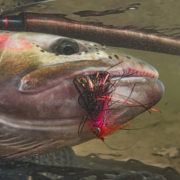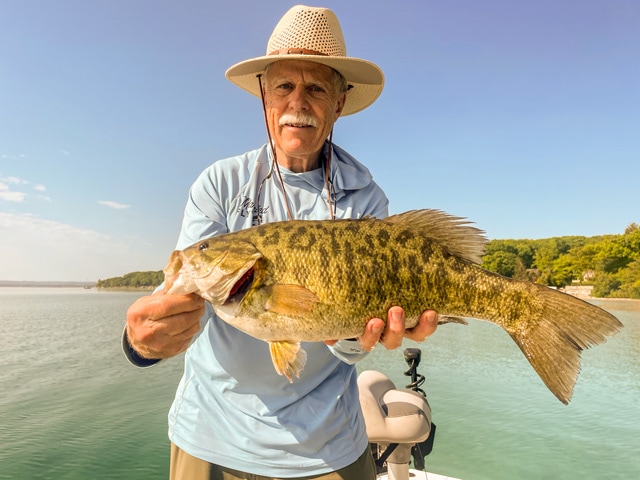Our Two Hands by Bloodknots Fly Fishing. This project has recently been brought to our attention and is worth your time & maybe your hard earned money.
The idea behind this film is to raise awareness of the plight of the Wild Steelhead in the western states, it’s native home, whose stocks are dwindling. Most of the individuals who are involved in this project are “in the fishing biz”, who spend the majority of their time fishing and guiding for steelhead, using the two handed rod, aka, the Spey rod, using the swung fly method. Some of them are our friends. All of them care deeply for wild steelhead.
Fishing the swung fly with a two handed rod requires skill, patience and lots of faith. The only method I can think of that might be harder to catch a steelhead with is with your bare hands! The attraction for me to fishing in this manner is complex…be it the fact that the technique was developed along the Spey river in Scotland hundreds of years ago to fish for Atlantic Salmon, where there is little backcast room and long casts are needed. Be it the beauty of the casts. Be it the beautiful flies and their histories. Then there is fact that you feel the fish take your fly, sometimes savagely, after you have enticed or irritated it into doing so, as opposed to “feeding” it below a bobber and not feeling anything until you set the hook. Fish when hooked on the swing set the hook themselves, shaking you out of the medatative trance of cast, swing, take a step or two, repeat. You are asking the fish to play along in your game, to join you on a journey of trust and to have faith that you will release it to make more beautiful and perfect creatures. Some of the reasons we love to fish this way is the fight that our beloved steelhead puts up…watching that backing peel off your reel and hearing that drag sing keeps us casting through those slumps and times where you feel like you are on cast number 957 and working towards number 1,000 that this fish is fabled for.
I learned to steelhead fish with a 15′ Sage 8 weight and a floating line on the Salmon River in North Fork, Idaho, swinging flies with names like Silver Hilton, Muddler, Green Butt Skunk, Macks Canyon, October Caddis, Greased Liner, Purple Peril and Skykomish Sunrise, at the beginning of the really hard times for these fish. The steelhead of the Salmon River, ID, swim hundreds of miles to return to their spawning grounds, through the perils dams, netting, seals, eagles and osprey, along with a host of the oceans creatures that are big enough to eat them. The biggest disadvantage against them is what we as humans have done and continue to do to impede their ability to return and propagate their species. Steelhead have the ability to live after they have spawned. Here in the Great Lakes, it is very easy for them to swim back out to the freshwater sea and put that all important weight back on so that they can come in and spawn again. We don’t know how many of the west coast steelhead actually make it back to sea. The coastal river fish obviously have the advantage of a shorter migration, whereas the fish of the Upper Columbia basin have the odds stacked against them.
These fish are majestic creatures who deserve our love and attention. In the lifetimes of our fathers, the steelhead on the west coast has gone from a bathtub like faucet turned full on to a drip out of the kitchen sink.
Please support this film to bring awareness to the greatest of our native fishes.





